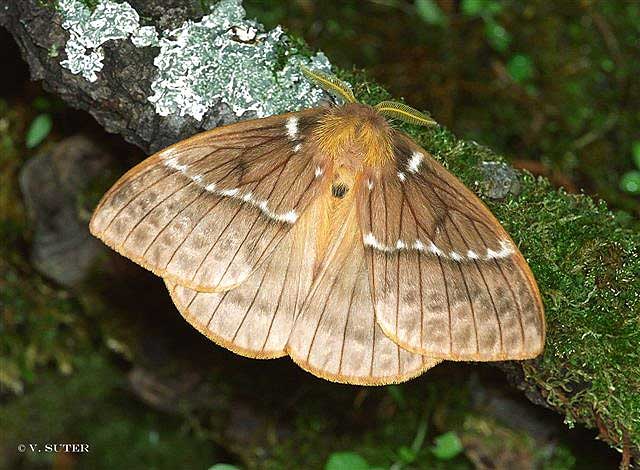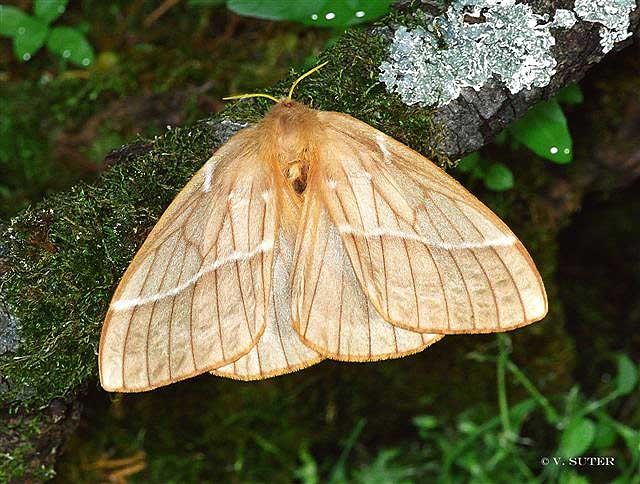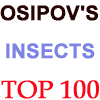Lemaireodirphia oaxacana
|
|
Updated as per ENTOMO-SATSPHINGIA Jahrgang 5 Heft 2 22.06.2012, (Lemaireodirphia); April 16, 2014
|
Lemaireodirphia oaxacana
leh-mair-oh-DIRF-ee-uhMoh-ah-hah-CAHN-uh

Lemaireodirphia oaxacana male, 80mm, Mexico,
on my home computer only.

Lemaireodirphia oaxacana male, Mexico,
courtesy of Viktor Suter and Bernhard Wenczel, id by Bill Oehlke.
The specimen directly above was originally labelled as Paradirphia hoegei, but the prominent white pm line with strong white markings
at intersection of wing veins, reduced dark pml area, and overall brighter appearance lead me to believe it is more likely L. oaxacana. Bill Oehlke
TAXONOMY:
Superfamily: Bombycoidea, Latreille, 1802
Family: Saturniidae, Boisduval, [1837] 1834
Subfamily: Hemileucinae, Grote & Robinson, 1866
Tribe: Hemileucinae, Grote & Robinson, 1866
Genus: Paradirphia Michener, 1949
|
MIDI MUSIC
"Someone to Watch
Over Me"
copyright C. Odenkirk
MIDI CITY
ON.OFF
<bgsound src="watch.mid" LOOP=FOREVER>
|
DISTRIBUTION:
Lemaireodirphia oaxacana
(wingspan: males: 80mm; females: 84mm // forewing length: males: 40-45mm; females: 43mm) flies in
Mexico: Oaxaca; at elevations near 1020-2200m.
This moth is very similar to L. hoegei but Lemaireodirphia oaxacana has an almost uniform light, bright brown ground colour with tinge of red.
The thin diffuse black pm line is inwardly lined with white , running straight from costa to M2-M3, with slight inturn and concave run to
A1 where it turns slightly inward to inner margin.
Visit Lemaireodirphia Comparison Chart.
FLIGHT TIMES AND PREFERRED FOOD PLANTS: Larvae possibly feed on Platanus lindeniana, Prunus, Pyrus malus, Robinia pseudoacacia and
Salix chilensis.
This species is on the wing in June-July and September-October, probably as at least two broods. There may be additional flight months.
ECLOSION, SCENTING AND MATING:Females extend a scent gland from the tip of the abdomen, and the night-flying males pickup and
track the airbourne pheromone plume with their well-developed antennae.

Lemaireodirphia oaxacana female, 84mm, Mexico,
on my home computer only.

Lemaireodirphia oaxacana female, Mexico,
courtesy of Viktor Suter and Bernhard Wenczel, tentative id by Bill Oehlke.
The specimen directly above was originally labelled as Paradirphia hoegei, but I believe it is more likely one of the recently (2012) described
Lemaireodirphia species, possibly L. oaxacana. Bill Oehlke
EGGS, LARVAE, COCOONS, AND PUPAE:Eggs are deposited in clusters on hostplant foliage.
Lemaireodirphia albida larvae are highly gregarious and have the urticating spines typical of larvae from the Subfamily Hemileucinae.
Larval Food Plants
It is hoped that this alphabetical listing followed by the common name of the anticipated foodplant will
prove useful. The list is not exhaustive. Experimenting with closely related foodplants is worthwhile.
Platanus lindeniana
Prunus
Pyrus malus
Robinia pseudoacacia.....
Salix chilensis
|
Plane
Cherry
Apple
Black locust/False acacia
Willow
|
The pronunciation of scientific names is troublesome for many. The "suggestion" at the top of the page is merely a suggestion. It is based on
commonly accepted English pronunciation of Greek names and/or some fairly well accepted "rules" for latinized scientific names.
The suggested pronunciations, on this page and on other pages, are primarily put forward to assist those who hear with internal ears as they read.
There are many collectors from different countries whose intonations and accents would be different.
Some of the early describers/namers chose genus and species names indicating some character of the insect, but more often, they simply chose
names from Greek or Roman mythology or history.Those species names which end in "ensis" indicate a specimen locale, and those which end in "i", pronounced "eye",
honour a contempory friend/collector/etc.
The genus name "Lemaireodirphia" is both honourific of Claude Lemaire and indicative of a great similarity to
moths in the genus Dirphia.
The species name "oaxacana" is indicative of a specimen type locale in Oaxaca, Mexico.

| 
Support this website and visit other insect sites by
clicking flashing butterfly links to left or right.
|

|





